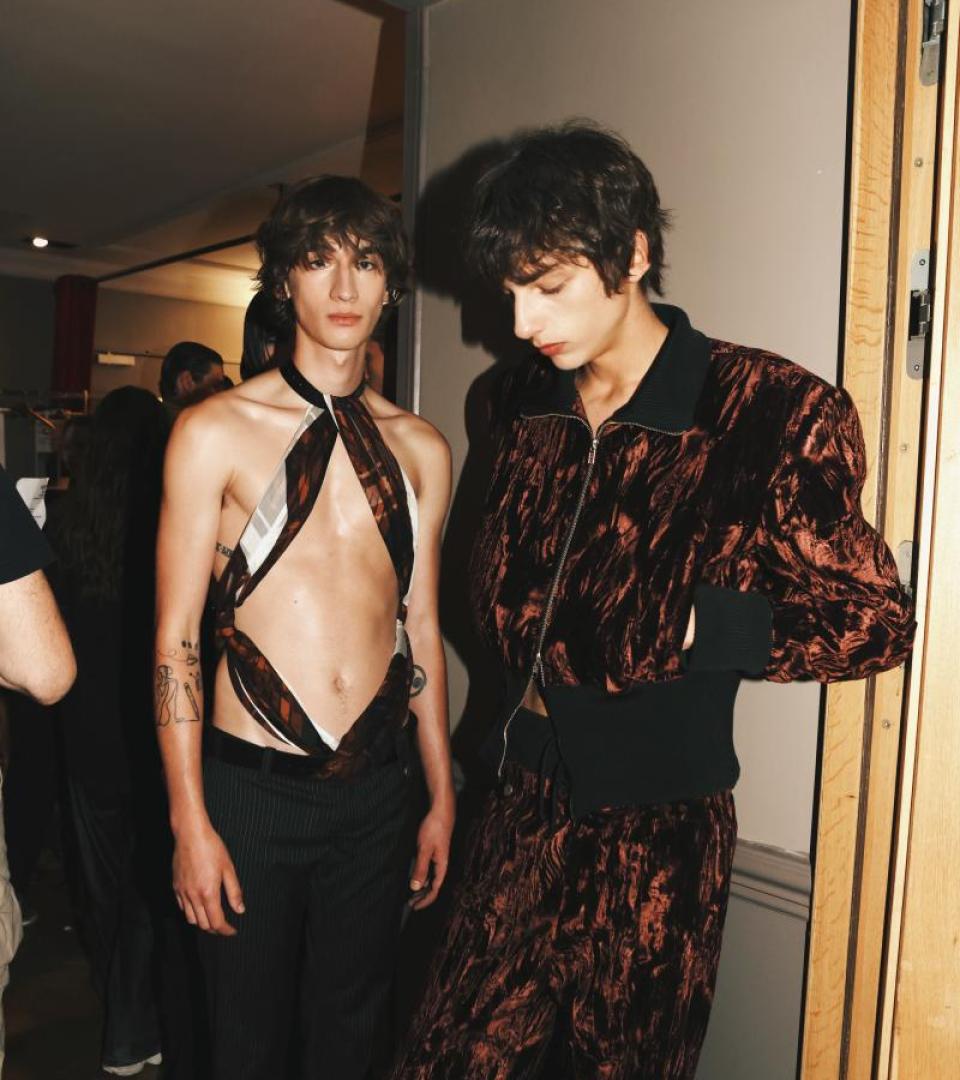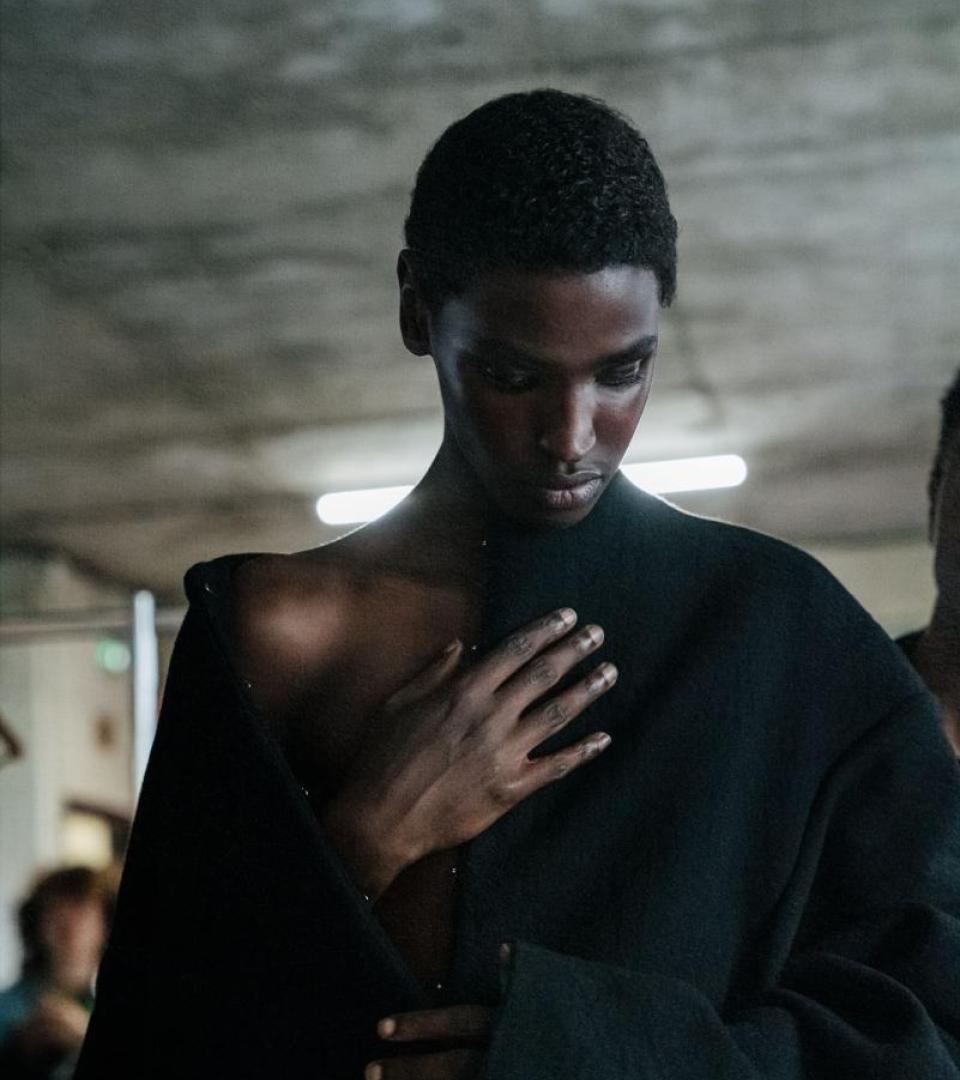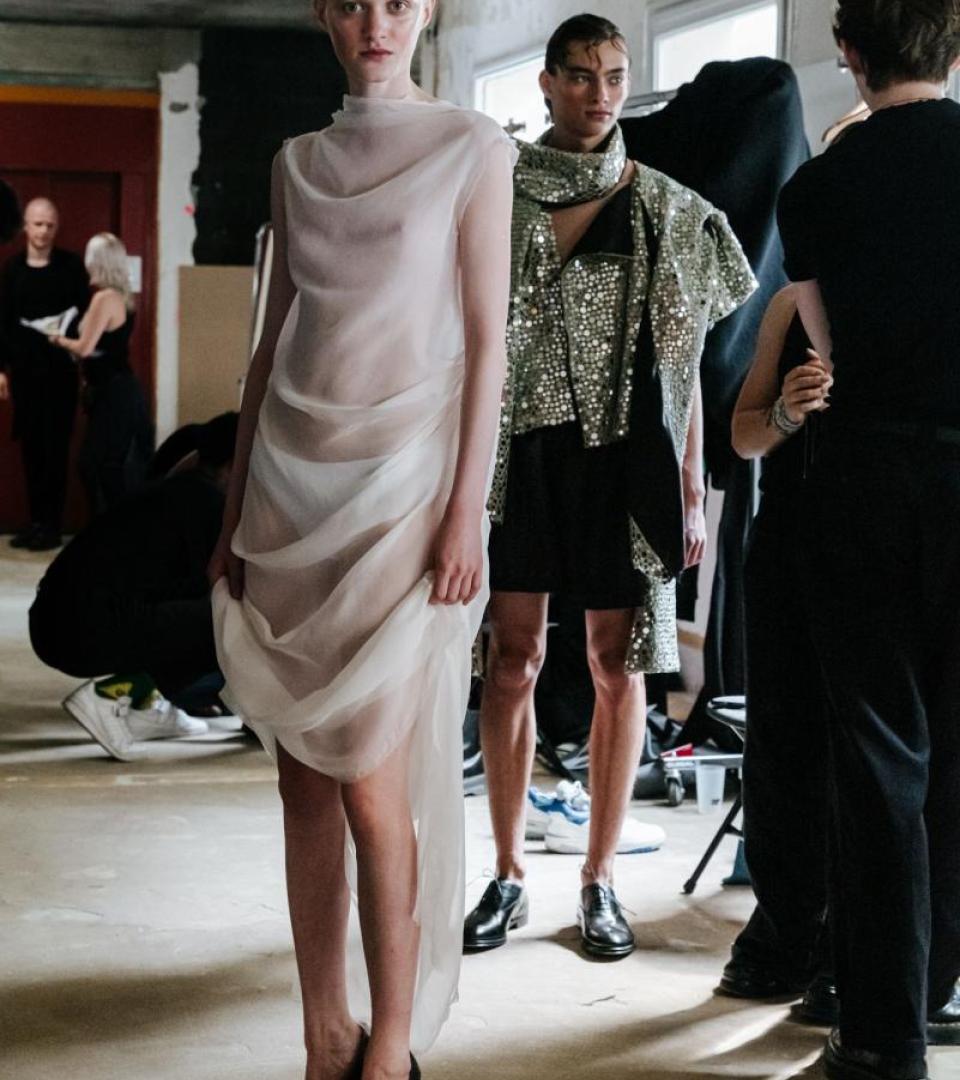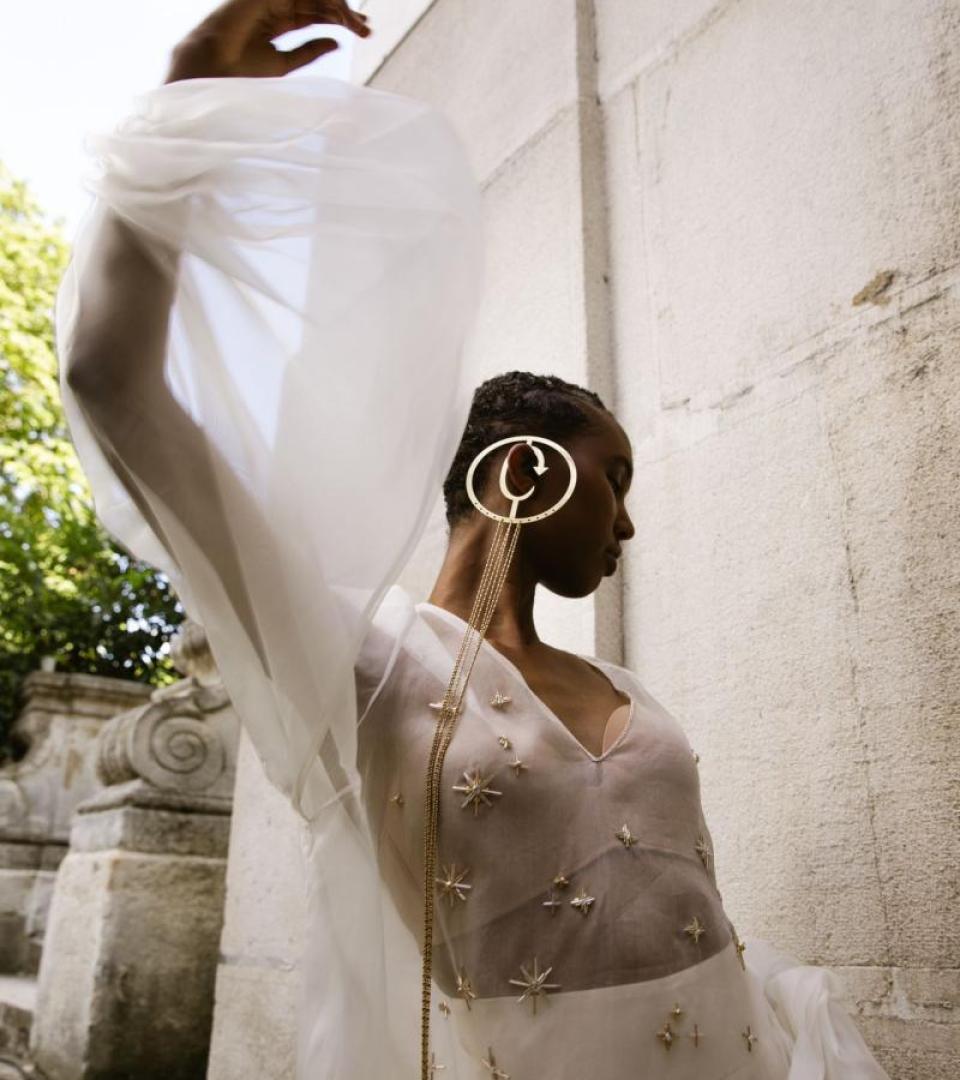Everyday Intrigue from Lutz Huelle
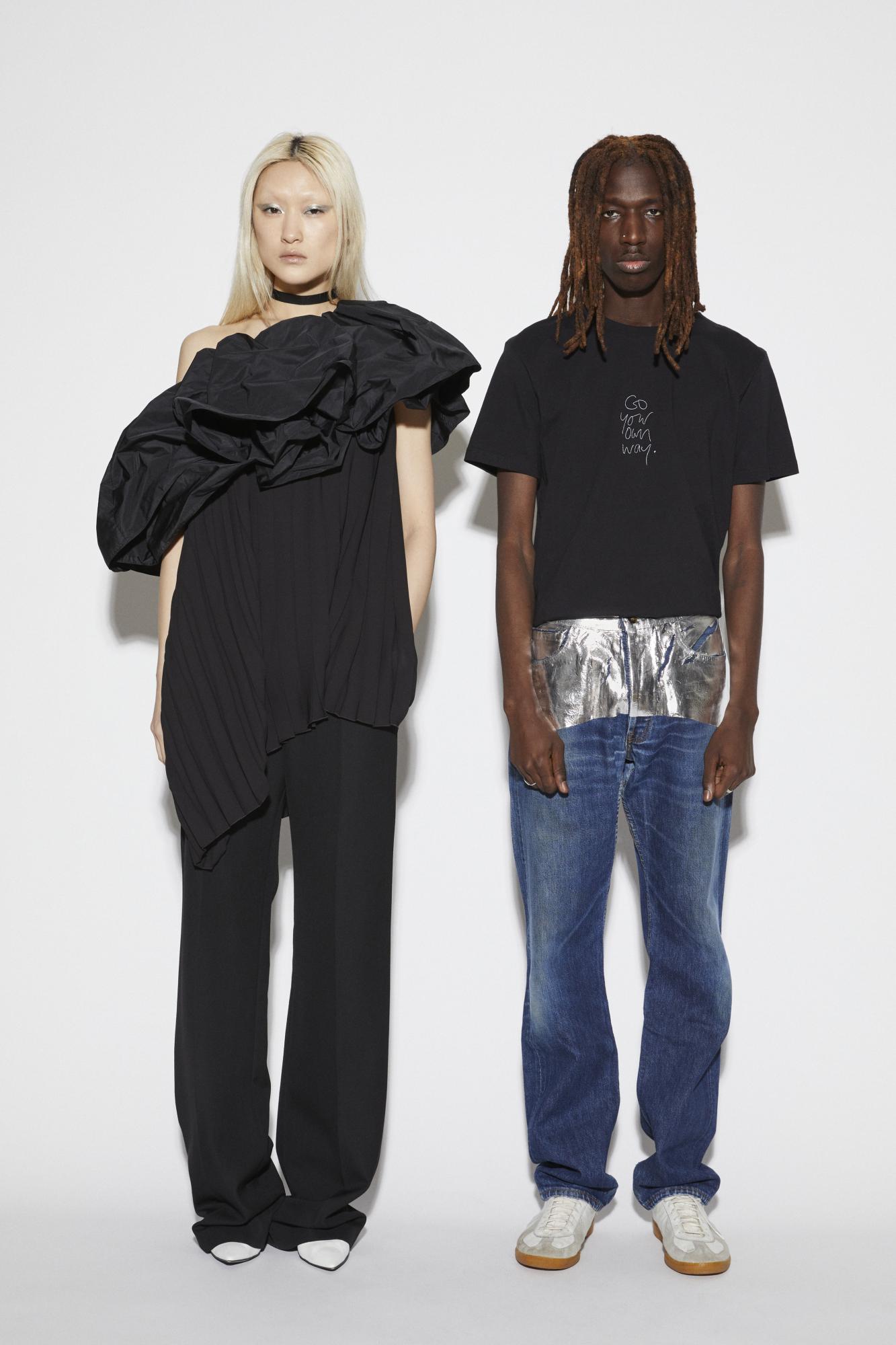
Lutz Huelle isn’t interested in breaking new ground. Blissfully unbothered by the trappings of hype culture and the overwhelming demand to forge a viral moment, the German-born designer routinely reflects on his own oeuvre propelled by a sense of inquisitiveness that he finds hard to suppress. For Fall-Winter 2023, he continued to explore his fixation with voluminous silhouettes that recall haute couture – an endeavour he has undertaken for upwards of seven years.
In Huelle’s world, innovation triumphs over obfuscation. Familiar garments are elevated with outsize proportions on sleeves; simple, easily-identifiable fabrics like jersey and cotton are juxtaposed with sumptuous taffeta. One new addition is a raincoat, loosely based on a waistcoat from last season – a simple square shape with a draped abstract volume that folds over the body. Notwithstanding his tendency to ruminate on the mundane, the importance of intrigue is not lost on Huelle.
“I’m thinking about extreme couture dresses and beautiful volumes, but how do you make them work for a person with a busy lifestyle? Something that’s wearable but it’s a bit more precious. Something that is more than just a jacket, a pair of pants, a sweater, a shirt,” said Huelle, on a video call from his Paris studio where preparations for this collection were still underway.
What would you like us to know about this collection?
The collection never really changes much from season to season. It’s much more like an ongoing project. I always look at what I’ve done before; maybe last season’s work or maybe work from collections ago, and I take it from there. I was interested in silhouettes this season. I like the idea of drama because everything has been about sportswear, casual, and streetwear for such a long time now that I liked thinking not only in terms of wardrobe, but also of silhouettes. Where do you place volume? Where do you want the body to look different? Where do you want someone’s eyes to go when you put something on? How do you move away from the everyday without losing that aspect?
What moment, design, or collection marked a turning point for you?
Obviously, there are a few collections that I like more than others and there are collections that I never want to see again in my life – it works both ways. In hindsight, it happens every four or five seasons, you can see that some were opening a door to how you’re going to continue. I’ve been doing it for such a long time now that it’s always the question of how you make something that stays in the here-and-now, but also something that corresponds to what you like. It must’ve been Spring-Summer 2016 or Spring-Summer 2017 when I had found a secondhand jacket with ’80s power shoulders and puffy sleeves – something I’ve always hated. Looking at it, I thought. ‘This is something I’ve never done before so maybe it was the moment to do it.’ I did a jacket with puffy sleeves and I put it in the show with some camouflage jacket underneath. The sleeve opened up a new universe of couture shapes – something that I never really liked or understood before because it’s always been so much about what one will wear everyday, the idea of the mundane, really simple everyday pieces. This showed me how it can be precious; and suddenly, I started doing bigger sleeves and bigger shapes.
How would you describe your evolution as a designer?
I’ve always liked the same things. When I first started, those things weren’t necessarily understood by a lot of people. Sportswear in high fashion, elevating sportswear, exploring different identities like streetwear, sportswear, and then evening wear, couture — all these different things – and I put them all together making something that has either no reference at all, or too many references to define.
Something that didn’t happen in fashion but, for me, it was always such a logical thing is that, in the future, we wouldn’t change our outfits three or four times a day in order to do different things. We would go to work and we would wear something that is just as good for going out afterwards to dinner and to a party. It’s about [clothing] functioning in different ways. That was why you had details from streetwear to sportswear. In the end, it became a part of the language of fashion for me. I feel at ease with what I’m doing now, which wasn’t always the case, because you become a better designer after 20 years of working on your collections. You know what you’re doing, I hope.
Evolution is gradual; revolution is radical. Is fashion still capable of revolution?
Fashion is this incredible beast that changes every single minute, every single day. It constantly evolves. Anybody who says that everything has been said or done in fashion is wrong in my mind because everyday there’s something new and fresh – that’s what fashion feeds on. Revolution happens in fashion when there is a social revolution. So as that happens, fashion will follow. As long as people get dressed, there will be fashion, and how it relates to the idea of clothes, identity, sexuality.
This interview has been lightly edited for length and clarity.
